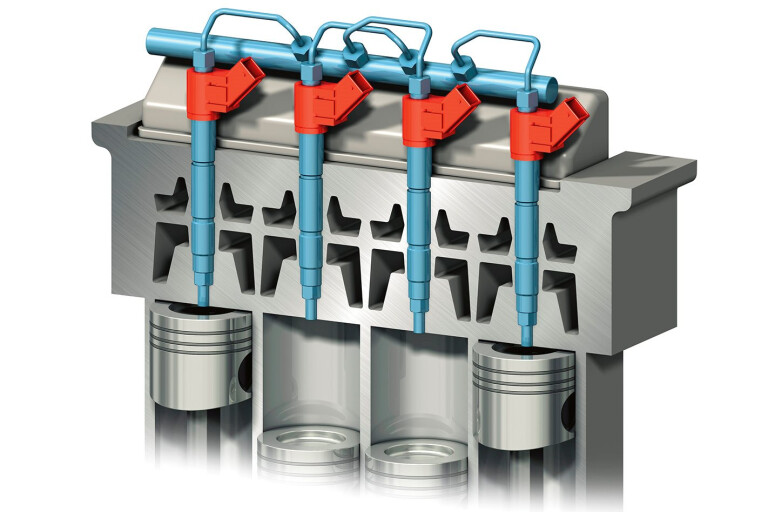
Common-rail diesel. No doubt you’ve seen these words a thousand times in this magazine and elsewhere. But just what is a common-rail diesel? And, for that matter what is the rail and what’s so common about it?
It refers to fuel rail, which is a fuel reservoir generally tube shaped. The word common refers to the fact that this fuel rail – or reservoir – supplies fuel to all the engine’s injectors in any line of cylinders. That’s a tech contrast to older engines where each injector was supplied by an individual – not common – line from the high pressure fuel pump.
In an in-line engine there is one fuel rail, but in V engines, like a V6 or V8, two rails, one for each bank of cylinders, are fed from the high pressure pump. The common rail is generally located as close to the injectors as possible.
Common-rail diesel systems use a pump that delivers the fuel to the common rail, or rails, at extremely high pressures; in some cases more than 2000bar.
The advantage of having the fuel in the common-rail at extremely high pressures, and close to the injectors, means that the required fuel can be injected into the combustion chamber in an extremely short period of time. So quickly, in fact, that for any one engine cycle (or combustion event) the fuel is delivered via multiple short squirts. The timing and duration of each of these multiple injections is finely tuned to maximise the engine’s torque delivery and smoothness, and minimise emissions and noise.
The fact that the fuel can be delivered to the combustion chamber quickly and accurately, depending on the needs of the engine at that exact point in time, means that the performance, efficiency and refinement can be optimised.
To achieve this, common-rail injection also relies on a sophisticated electronic brain that gathers information on things including throttle position, engine revs, road speed, engine oil, coolant temperature, and intake air density from various sensors. It then works out the exact amount of fuel that’s required. This brain is called the Electronic Control Unit, or ECU.
Unfortunately most sophisticated technology has a downside, and in the case of common-rail injection there are significant potential problems.
First up, common-rail systems require highly refined and scrupulously clean diesel fuel; some European car companies delayed bringing their first-generation common-rail diesel engines to Australia in the late 1990s until our diesel-fuel quality was improved, which happened via government mandate.
This legislation, among other things, was aimed at reducing sulphur content. This in itself creates another problem as sulphur is a lubricant, which can reduce wear in diesel pumps and the like.
Also, any contaminates or water in diesel fuel can be disastrous to both the injectors and the fuel pump, the two big-dollar components in common-rail systems. Unlike older diesel injection systems where the pumps and injectors could be serviced and repaired by a diesel mechanic, those used in common-rail systems generally need to be replaced as a whole unit when they fail. And when an injector is replaced it often has to be set-up electronically, which requires vehicle-specific diagnostic equipment. This brings cost and practicality problems, especially in remote locations.
If you have common-rail diesel there are a few simple things that you can do to reduce the risk of problems. Always try to fill up at a major fuel station with a high turnover, as their fuel is likely to be cleaner. Avoid bio-diesel and never, ever use homemade bio-diesel. Avoid filling out of fuel drums where possible.
Try to avoid filling in the rain in the open, as even a small amount of water in diesel fuel can cause problems. If your vehicle has a water trap in the fuel system, clean it regularly.
Finally, don’t substitute cheap aftermarket fuel filters for genuine OEM articles.
The genuine ones will be more expensive, but it’s cheap insurance against the cost of repairs if a dodgy filter lets contaminants through to the fuel pump and injectors. However, a quality secondary filter can be added to the system as added protection.

COMMENTS